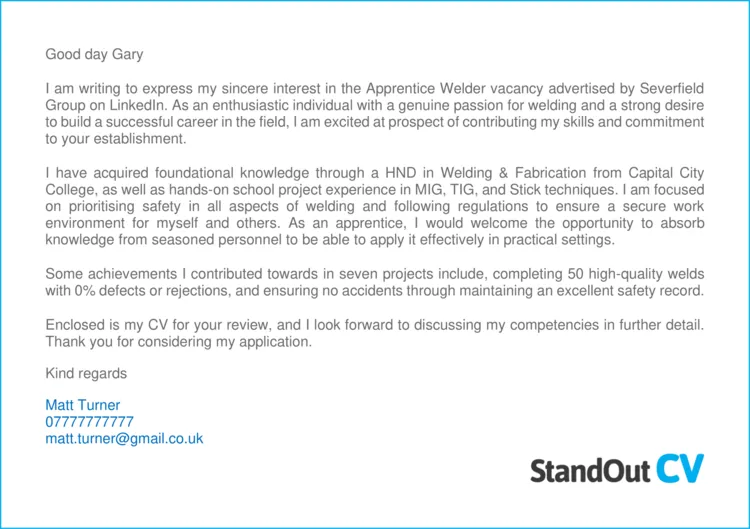Understanding the Apprenticeship Cover Letter
An apprenticeship cover letter is a crucial document that accompanies your application for an apprenticeship program. It serves as your introduction to the employer and provides an opportunity to showcase your interest, skills, and qualifications. Unlike a resume, which simply lists your experience, a cover letter allows you to explain why you’re a perfect fit for the specific apprenticeship and organization. This guide will walk you through how to write an effective cover letter that grabs the attention of hiring managers and increases your chances of landing your dream apprenticeship. Mastering this skill is not just about getting a job; it’s about starting your career journey on the right foot by presenting yourself professionally and making a strong first impression. The cover letter gives you space to express your personality and unique strengths, setting you apart from other applicants.
What is an Apprenticeship Cover Letter?
An apprenticeship cover letter is a formal document that you submit with your resume when applying for an apprenticeship. Its primary purpose is to introduce yourself to the employer, express your interest in the specific apprenticeship opportunity, and highlight why you’re a suitable candidate. It should be tailored to the particular apprenticeship you’re applying for and should clearly articulate your relevant skills, experience, and enthusiasm. The letter also allows you to elaborate on your career goals and how the apprenticeship aligns with your aspirations. It’s a way to make a personal connection with the hiring manager, showing them that you’re not just sending a generic application but are genuinely interested in their program and company.
Why is a Cover Letter Important?
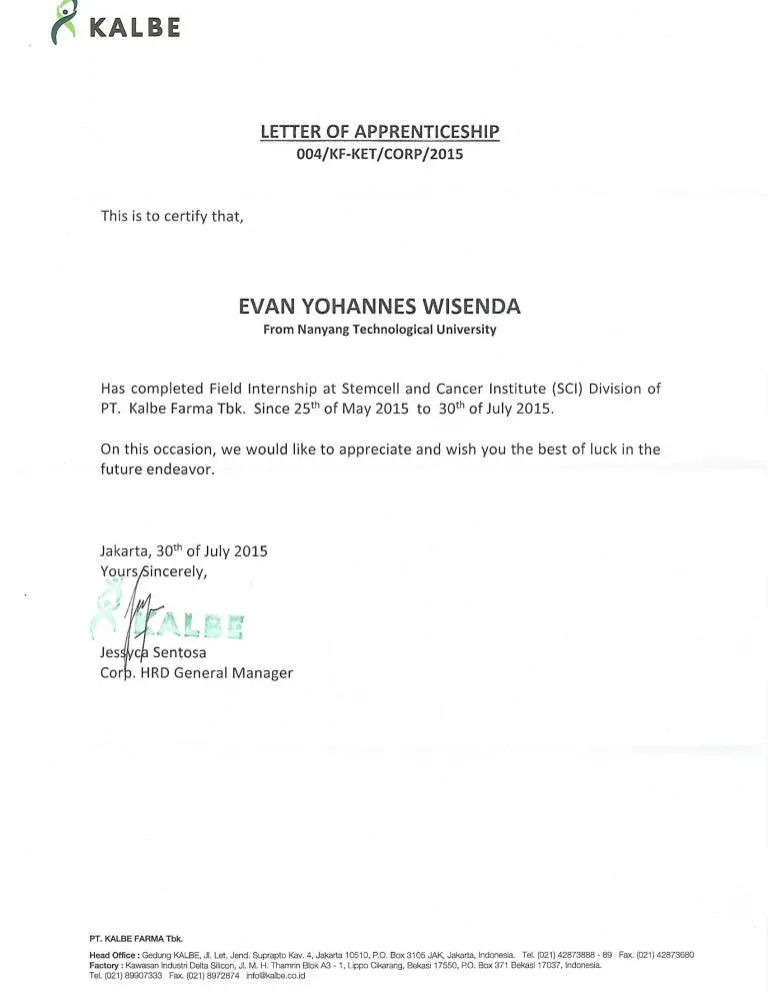
A cover letter is important because it provides context to your resume and allows you to tell your story in a compelling way. It gives you space to explain any gaps in your experience, elaborate on your skills, and showcase your personality and enthusiasm for the apprenticeship. Many employers view a cover letter as a key part of the application process; it demonstrates your communication skills, attention to detail, and genuine interest in the opportunity. A well-written cover letter can significantly increase your chances of being selected for an interview, as it sets you apart from other applicants and leaves a positive first impression. A strong cover letter can be the deciding factor in whether you get an interview or not, so it’s worth investing time and effort in crafting a compelling one.
Key Components of a Successful Apprenticeship Cover Letter
Several key components are essential for a successful apprenticeship cover letter. First, ensure your contact information is accurate and easy to find. Next, address the hiring manager by name whenever possible, as this shows you’ve taken the time to research the company. Your opening paragraph should grab their attention by stating your interest in the apprenticeship and highlighting what makes you a strong candidate. The body of the letter should emphasize your relevant skills, experience, and qualifications, providing specific examples to support your claims. Finally, the closing should express gratitude and include a clear call to action, such as requesting an interview. Paying attention to these elements can make your letter stand out.
Header Your Contact Information
Your cover letter should begin with a header that includes your contact information. This typically includes your full name, phone number, email address, and optionally, your LinkedIn profile URL. Make sure the information is accurate and up-to-date. The header should be clearly formatted and easy to read, usually aligned to the left or right side of the page. This allows the employer to quickly identify who you are and how to contact you. Double-check all details to ensure there are no typos or errors that could prevent the employer from reaching out to you. Using a professional-looking header demonstrates your attention to detail and organizational skills.
Address the Hiring Manager
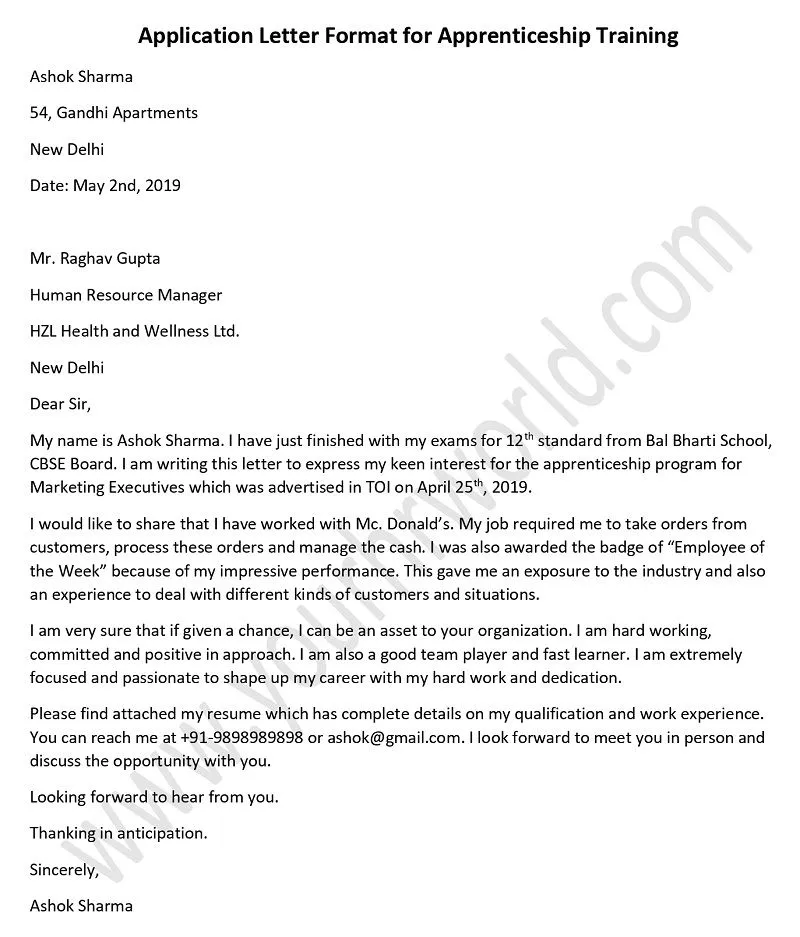
Whenever possible, address the cover letter to a specific person, such as the hiring manager or the contact person listed in the job posting. This personal touch demonstrates that you’ve taken the time to research the company and are genuinely interested in the position. If you cannot find a name, you can use a general salutation like “Dear Hiring Manager.” However, avoid generic greetings like “To Whom It May Concern.” Research the company’s website or LinkedIn to find the name of the person you should address. This shows initiative and respect for the hiring process. Addressing the letter to a specific individual makes your application feel more personal and increases the likelihood of a positive response.
The Opening Paragraph Grab Their Attention
The opening paragraph is your chance to make a strong first impression. Begin by stating the specific apprenticeship you are applying for and how you found the opportunity. Then, immediately highlight why you’re interested in the role and what makes you a good fit. Briefly mention your key skills or experiences that align with the requirements of the apprenticeship. The goal is to capture the reader’s attention from the start and make them want to learn more about you. Keep it concise and enthusiastic, conveying your excitement for the apprenticeship and the company. A compelling opening paragraph sets the tone for the rest of your cover letter and encourages the hiring manager to continue reading.
Highlight Your Skills and Qualifications
In the body of your cover letter, clearly highlight the skills and qualifications that make you a strong candidate for the apprenticeship. Refer to the job description and identify the key skills and requirements the employer is looking for. Provide specific examples from your past experiences, such as coursework, projects, volunteer work, or previous employment, that demonstrate you possess those skills. Quantify your accomplishments whenever possible to show the impact you’ve made. Tailor your examples to match the apprenticeship’s requirements, and avoid simply listing skills. Instead, explain how you have used these skills to achieve specific results or solve problems. This is a crucial step in showing the employer that you are well-prepared for the apprenticeship.
Emphasize Relevant Experience
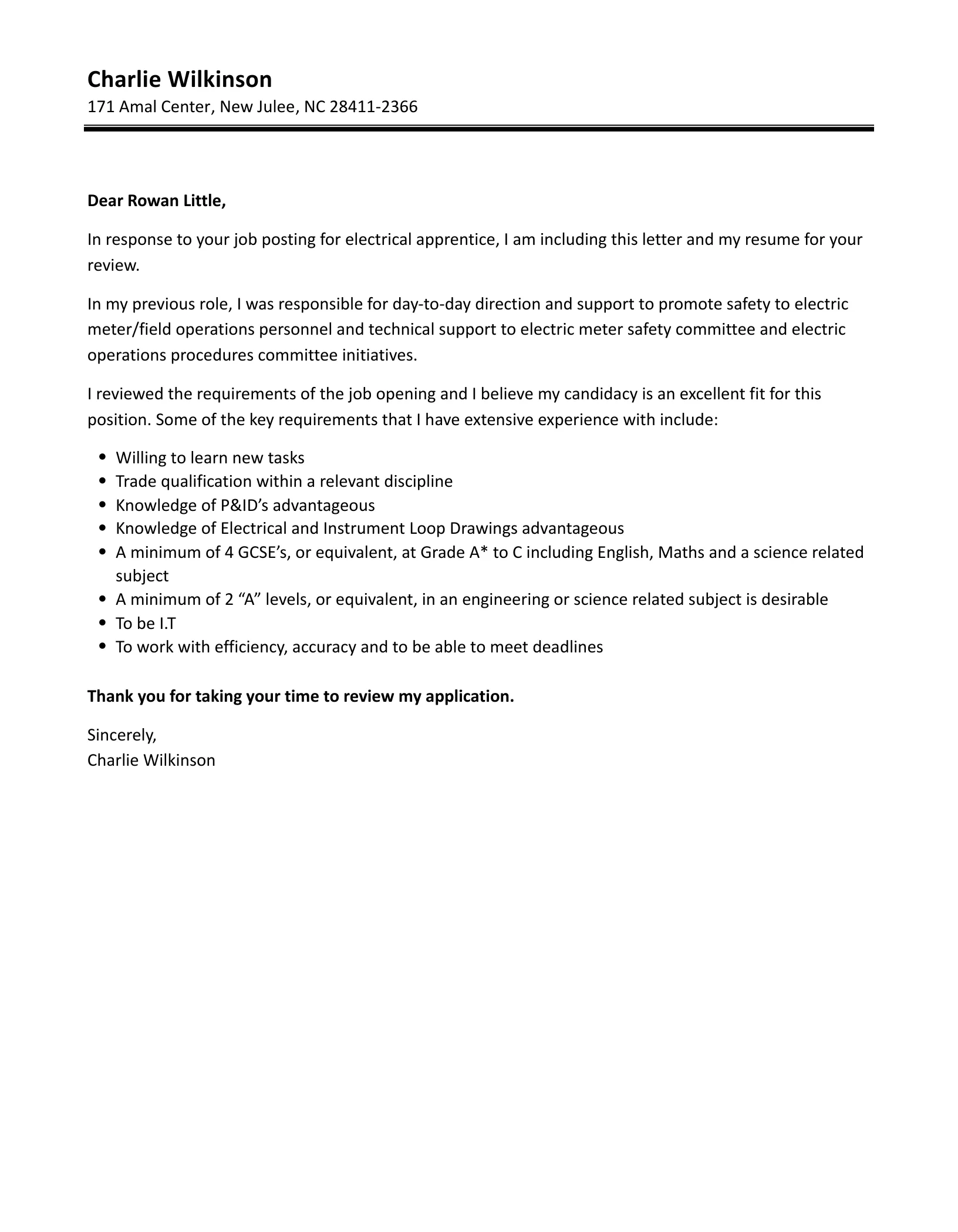
Even if you lack extensive work experience, focus on the relevant experiences you do have. This could include projects from school, volunteer work, extracurricular activities, or any part-time jobs. Describe what you did in those experiences, the skills you developed, and the results you achieved. Emphasize any experience that aligns with the requirements of the apprenticeship, even if it seems unrelated. Highlight transferable skills such as communication, teamwork, problem-solving, and time management. Show the employer that you have the ability to learn and adapt to new challenges. Providing specific examples and quantifying your achievements can make your experience more compelling. Focus on what you have learned and how it will benefit you in this new role.
Showcase Your Enthusiasm for the Apprenticeship
Expressing genuine enthusiasm for the apprenticeship and the company is crucial. Explain why you are interested in this specific opportunity and what attracts you to the organization. Show that you have researched the company and understand its mission, values, and goals. Mention specific aspects of the apprenticeship that excite you, such as the training, the industry, or the opportunity for growth. Demonstrate your understanding of the industry and the role. This shows the hiring manager that you are genuinely invested in the apprenticeship and not just applying for any job. Your enthusiasm can set you apart from other applicants, making you seem more motivated and committed.
Explain Why You’re a Good Fit
In your cover letter, explicitly explain why you are a good fit for the apprenticeship. Connect your skills, experience, and enthusiasm to the requirements of the role. Describe how your strengths align with the demands of the apprenticeship and the company’s culture. Highlight any specific aspects of the apprenticeship that resonate with your career goals and aspirations. Show the employer that you have thought about how you can contribute to their team and what value you can bring. By clearly articulating your suitability for the role, you demonstrate your understanding of the apprenticeship and your commitment to succeeding in it.
Closing the Cover Letter
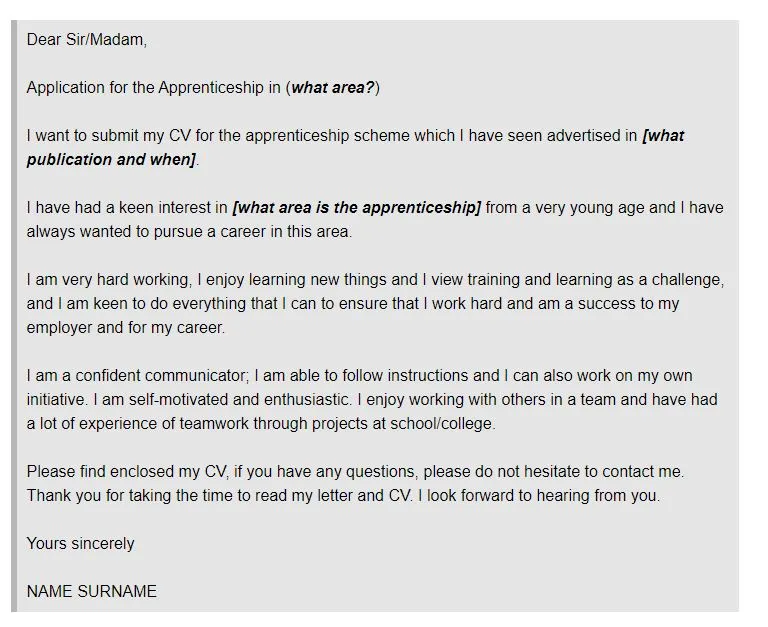
The closing of your cover letter should be polite, professional, and action-oriented. Start by expressing your gratitude for the reader’s time and consideration. Reiterate your interest in the apprenticeship and your confidence in your ability to succeed. End with a clear call to action, such as requesting an interview or stating your availability for a follow-up call. Thank the hiring manager again, and include a professional closing such as “Sincerely” or “Best regards,” followed by your full name. The closing paragraph should leave a positive and lasting impression, reinforcing your enthusiasm and desire to be part of the company.
Express Gratitude
Always express your gratitude to the hiring manager for considering your application. Thank them for their time and attention to your cover letter. This shows respect and professionalism. A simple statement of appreciation can go a long way in leaving a positive impression. It also demonstrates your understanding of the hiring process and your respect for the employer’s efforts. Expressing gratitude is a crucial part of the closing paragraph and should always be included.
Call to Action
Include a clear call to action at the end of your cover letter. This can be a simple request for an interview or an invitation to discuss your application further. Make it easy for the hiring manager to take the next step by providing clear instructions. For example, you could write, “I am eager to discuss my qualifications further and would welcome the opportunity for an interview.” or “I am available for a call at your earliest convenience.” A call to action ensures that the employer knows what you expect and what steps you would like them to take next. It helps to move your application forward and increases your chances of getting noticed.
Proofread and Edit Your Cover Letter
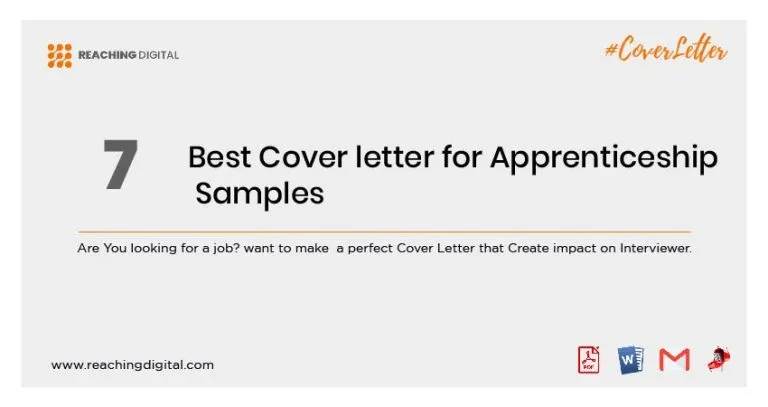
Proofreading and editing your cover letter is a critical step in the writing process. Carefully review your letter for any grammatical errors, spelling mistakes, or typos. These errors can make you appear unprofessional and diminish the impact of your application. Read the letter aloud to check for awkward phrasing or unclear sentences. Consider having a friend, family member, or career advisor review your cover letter for feedback. Ensure that the formatting is consistent and that the letter is easy to read. Pay attention to the tone and make sure it aligns with the company’s culture and values. Proofreading ensures that your letter reflects your attention to detail and commitment to excellence.
Common Mistakes to Avoid
Several common mistakes can undermine your cover letter. Avoid using generic language that could apply to any job, and tailor your letter to the specific apprenticeship. Don’t simply restate your resume; instead, use the letter to elaborate on your qualifications and experiences. Steer clear of jargon and overly complex language. Keep your tone positive and enthusiastic, and avoid negative comments about past employers or experiences. Do not exceed the recommended length of one page. Make sure to double-check for typos, grammatical errors, and formatting inconsistencies. These mistakes can reflect poorly on your attention to detail and professionalism.
Formatting and Presentation
The formatting and presentation of your cover letter are also important. Use a professional font like Times New Roman, Arial, or Calibri, and ensure the font size is easy to read (typically 11 or 12 points). Maintain consistent spacing and margins throughout the document. Use clear headings and bullet points to break up text and improve readability. Make sure your cover letter is well-organized and visually appealing. The format should be easy for the hiring manager to read and scan. A well-formatted cover letter demonstrates your attention to detail and professionalism and makes a positive impression.
Example Apprenticeship Cover Letter Template
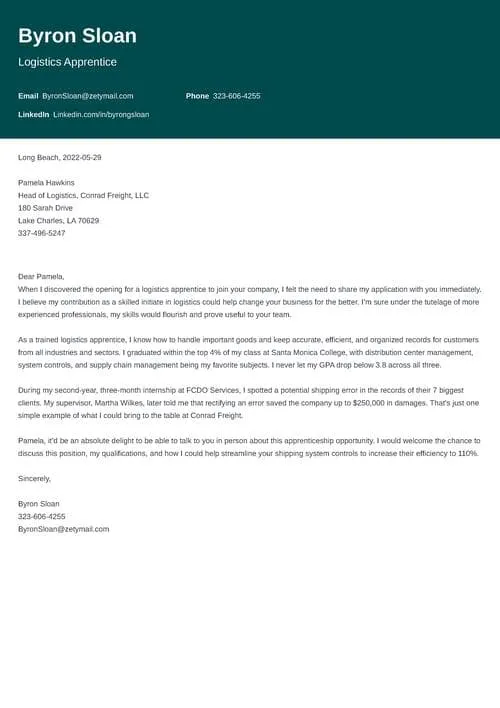
Here is a basic template to get you started (Remember to customize it to fit your needs). [Your Name] [Your Address] [Your Phone Number] [Your Email] [Date] [Hiring Manager Name] (If known), [Hiring Manager Title] [Company Name] [Company Address] Dear [Mr./Ms./Mx. Last Name], I am writing to express my keen interest in the Apprenticeship position at [Company Name], as advertised on [Platform where you saw the ad]. I was drawn to the opportunity because of [mention something specific about the company or apprenticeship]. [Paragraph 2: Briefly describe your relevant skills and experience, and explain why you are a good fit for the apprenticeship]. [Paragraph 3: Elaborate on your skills and experience, providing specific examples to support your claims]. I am confident that my [mention key skills or qualifications] will enable me to contribute effectively to your team. [Closing paragraph: Express gratitude and include a call to action, e.g., “I am eager to discuss my qualifications further and would welcome the opportunity for an interview.”] Thank you for your time and consideration. Sincerely, [Your Name]. Adapt this template to the specific apprenticeship and your qualifications.
Customizing Your Cover Letter
Customizing your cover letter for each apprenticeship is crucial. A generic cover letter will not stand out, and it will likely be discarded. Tailor the content to the specific requirements of the role and the company. Research the company and apprenticeship to understand their needs and values. Use keywords from the job description in your cover letter to demonstrate your understanding of the role. Personalize your letter by mentioning specific aspects of the company or apprenticeship that interest you. Showing that you’ve taken the time to tailor your application demonstrates your interest and increases your chances of success.
Tailoring to the Specific Apprenticeship
When tailoring your cover letter to a specific apprenticeship, carefully review the job description and highlight the skills and qualifications the employer is seeking. Emphasize any relevant experiences, even if they seem unrelated, and explain how they have prepared you for this opportunity. Use the language and keywords from the job description throughout your cover letter. Focus on what you can offer the company and how your skills and experience align with their needs. This tailoring shows the employer that you understand the role and are the right fit for the position. Personalize the letter to make it stand out. Customize your letter to make your application more effective.
Using Keywords Effectively
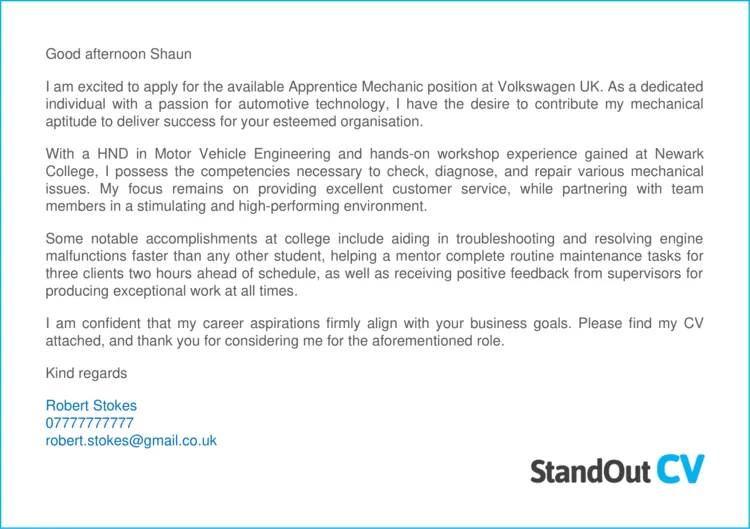
Use keywords from the job description throughout your cover letter to increase your chances of being selected. Identify the key skills, qualifications, and requirements listed in the job posting. Incorporate these keywords naturally into your cover letter, ensuring that the language aligns with the specific role and company. Avoid keyword stuffing, which can make your letter sound unnatural and forced. The goal is to make your application more relevant to the hiring manager and easier to understand. Using keywords effectively ensures that your application is reviewed and that you are considered for the apprenticeship.
Cover Letter for Different Apprenticeship Types
The approach to your cover letter can vary slightly depending on the type of apprenticeship you are applying for. Always research and adjust your letter to match the requirements of the specific apprenticeship type. Some examples are given below.
Trades Apprenticeship Cover Letter
When applying for a trades apprenticeship (e.g., plumbing, electrical work, carpentry), emphasize any hands-on experience or relevant skills. Highlight any courses, certifications, or projects that demonstrate your understanding of the trade. Be sure to mention your physical fitness and ability to work outdoors or in demanding conditions. Focus on your ability to follow instructions, work as part of a team, and a strong work ethic. Show your interest in the specific trade and your commitment to learning and developing the skills necessary to become a skilled tradesperson. This can include projects you worked on at home, or volunteer projects.
IT Apprenticeship Cover Letter
For IT apprenticeships, highlight your technical skills and knowledge. Mention any relevant coursework, certifications (e.g., CompTIA A+), or projects that demonstrate your understanding of IT concepts. Emphasize your problem-solving skills, attention to detail, and ability to learn new technologies. Show enthusiasm for the IT field and your desire to gain practical experience in a professional setting. Mention your experience in fixing computers or setting up networks.
Business Administration Apprenticeship Cover Letter
When applying for a business administration apprenticeship, highlight your organizational skills, communication abilities, and attention to detail. Emphasize any experience with administrative tasks, customer service, or office management. Mention any relevant coursework or projects that showcase your business acumen. Show your interest in the company’s industry and your understanding of the business environment. Highlight your customer service skills and your experience with Microsoft Office.
